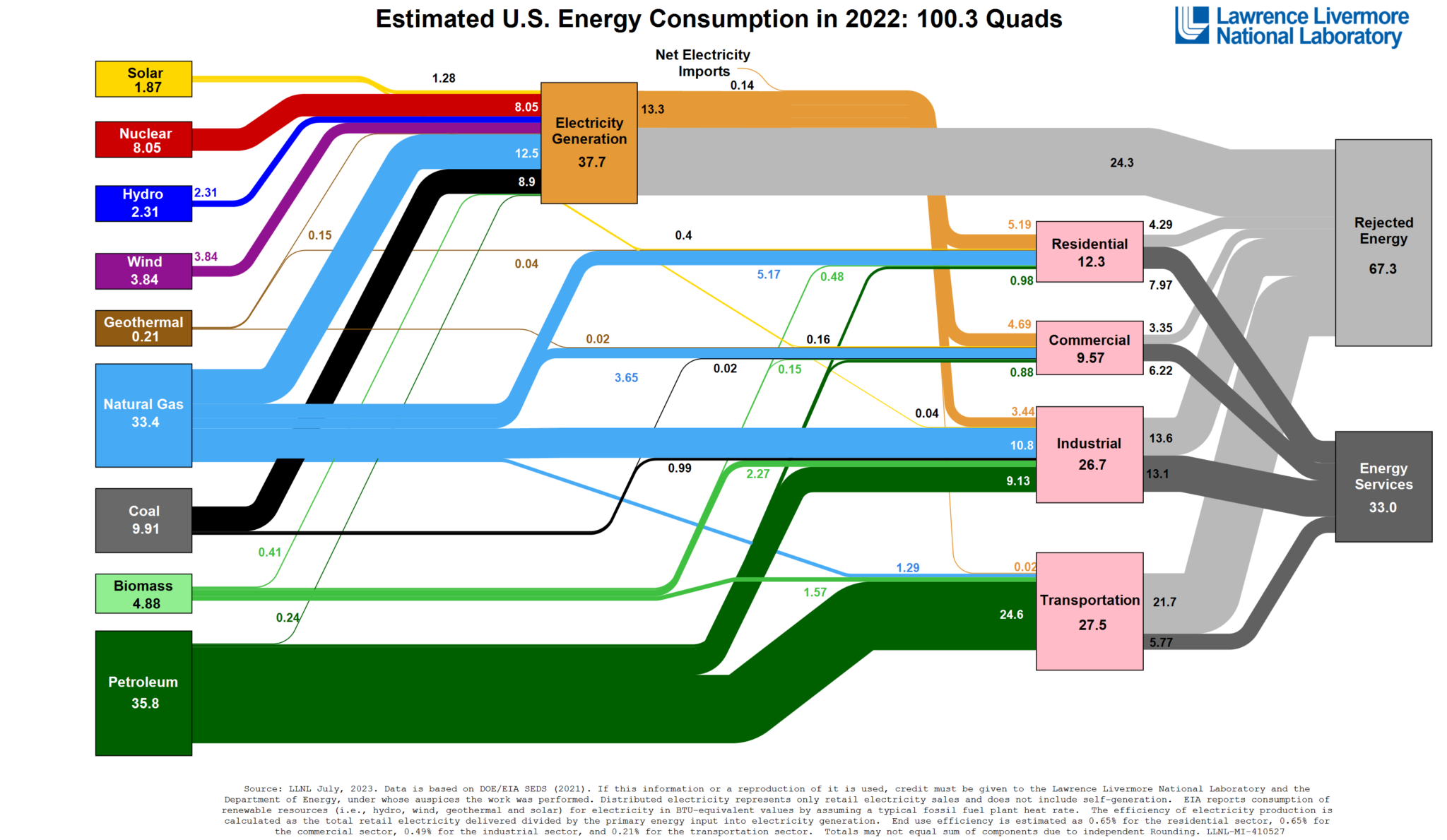
Electrification is widely seen as a critical solution to climate change. By replacing fossil fuels with electricity in all sectors of the economy, we can significantly reduce greenhouse gas emissions. However, the effectiveness of electrification depends on where the electricity is generated.
Traditionally, electricity has been generated at large power plants and then transmitted over long distances to homes and businesses. This transmission process is not without its losses. In fact, according to the Department of Energy, an average of about 6% of electricity is lost during transmission and distribution. Further, as shown in the above graphic produced by Lawrence Livermore Labs, in total 67% of the energy inputs into all systems in the U.S. end up wasted. Most of that is lost as wasted heat and friction.
This loss of energy is not only inefficient, but it also undermines the environmental benefits of electrification. If we are going to truly decarbonize our economy, we need to find ways to generate electricity in more efficient ways and closer to where it is used.
This is where onsite renewable energy generation comes in. Solar panels, wind turbines, and other renewable energy technologies can be installed on rooftops, in fields, and on other properties. This locally generated electricity, known as “distributed generation,” can then be used to power homes and businesses, reducing reliance on the traditional grid.
Battery storage is another key piece of the puzzle. Batteries can store excess renewable energy generated during the day,so that it can be used at night or during peak demand periods. This helps to smooth out the supply of renewable energy and make it more reliable.
By combining onsite renewable energy generation with battery storage, we can create a more resilient and sustainable electricity grid. This will not only reduce greenhouse gas emissions, but it will also improve air quality and public health.
The Benefits of Onsite Renewable Energy Generation with Battery Storage
There are many benefits to onsite renewable energy generation with battery storage, including:
- Reduced energy losses: By generating electricity closer to where it is used, we can reduce the amount of energy that is lost during transmission and distribution.
- Increased efficiency: Renewable energy sources like solar and wind are inherently efficient, and battery storage can help to further improve efficiency by storing excess energy for later use.
- Reduced greenhouse gas emissions: By replacing fossil fuels with renewable energy, we can significantly reduce greenhouse gas emissions from the electricity sector.
- Improved air quality: Renewable energy sources do not produce harmful air pollutants, which can improve air quality and public health.
- Increased energy security: By generating our own electricity, we can reduce our reliance on foreign oil and gas.
- Lower electricity costs: In the long run, onsite renewable energy generation can help to lower electricity costs for consumers.
- Reduced investment in the grid: The closer power generation is to the load, the less need to install more costly distribution and transmission lines and substations.
Making Onsite Renewable Energy Generation with Battery Storage a Reality
There are a number of things that can be done to make onsite renewable energy generation with battery storage a reality,including:
- Government incentives: Governments can provide financial incentives to encourage businesses and homeowners to install renewable energy systems and battery storage.
- Regulatory reforms: Regulations can be reformed to make it easier to connect renewable energy systems to the grid.
- Technological innovation: Continued investment in research and development can help to drive down the costs of renewable energy technologies and battery storage.
By working together, we can make onsite renewable energy generation with battery storage a key part of our clean energy future.